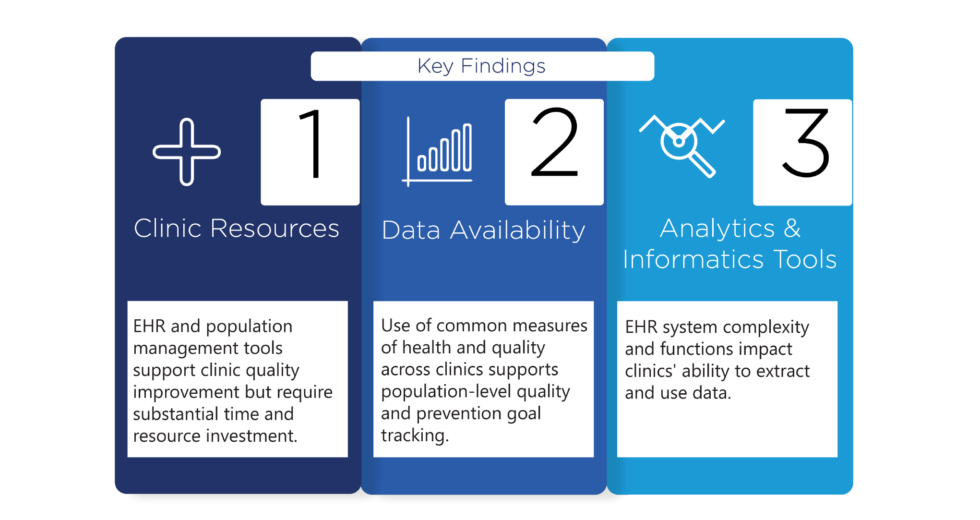Unlocking the Potential of Electronic Health Records in Pediatric Healthcare

As the pediatric healthcare field innovates to address social determinants of health and help families meet concrete needs, electronic health records can serve as an important tool for quality improvement and evaluation. Variation in systems, staff knowledge, skills, and availability of resources present barriers to realizing the full potential of this tool. Addressing these barriers systematically across the pediatric field could unlock the potential of using electronic health records to inform innovations for high-quality healthcare for children and families that support health and well-being. This brief is part of Chapin Hall’s evaluation of innovations designed to promote screening for contributors to toxic stress during pediatric well-child visits and connect families to early childhood and community service providers.
What We Did
The transition in the healthcare field from paper records to electronic health records (EHR) introduces opportunities to streamline and inform a number of functions, including billing, quality reporting, service tracking, and evaluation of health outcomes. Researchers surveyed and held discussions with staff from nine pediatric clinics in five communities to learn about the technical capabilities of clinics to use patient electronic health records. Staff use these records for evaluation and quality improvement purposes, specifically related to their effort to introduce screening and referral to address social determinants of health (SDOH) consistent with AAP Bright Futures Guidelines for pediatric primary care.
What We Found
We identified three key aspects related to clinic capabilities to access and use EHR. First, analytic and population management tools necessary to support use of clinic resources for quality improvement and evaluation required substantial investments of clinic and staff time and resources. Second, clinics capture and use a wide variety of measures. This creates a barrier to comprehensive, cross-clinic service tracking and quality assessment. Use of common measures of health and quality across clinics would support population-level quality and prevention goal tracking. Finally, the complexity of analytic and informatics tools impacts the ability of clinics to access and use data without specialized knowledge or staff.
What It Means
Though electronic records present an opportunity for quality improvement and evaluation, this use is fundamentally different from its primary purpose: to support and document the clinical and administrative records of healthcare visits. Thus, resources and effort must be directed toward addressing issues related to system and staff efficiency and data exchange capabilities. Addressing these issues will require staff time and expertise. However, it will allow clinics to leverage these routinely collected data to support high-quality, prevention-based services for children and families.



 Thank you for your interest in Chapin Hall’s research. Please share some information to access this file.
Thank you for your interest in Chapin Hall’s research. Please share some information to access this file.